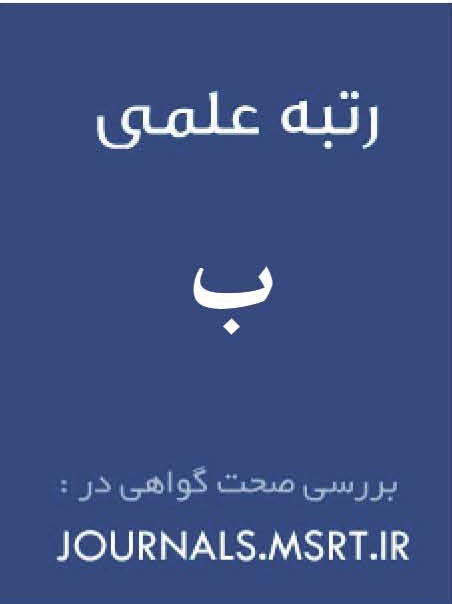Evaluating the Causal Relationship Between Exchange Rate and Its Volatility with the Misery Index in Iran
Keywords:
Causality test under structural breaks, Fourier approximation, Misery index, Exchange rateAbstract
The misery index is a key indicator for assessing a society's economic condition and its impact on public welfare. An increase in this index signals an intensification of economic problems that affect the well-being of individuals. Consequently, the misery index functions as an important tool for policymakers to adopt appropriate decisions aimed at improving economic conditions. Particularly during periods of crisis and economic recession, this index serves as a warning signal, highlighting the urgent need for corrective policy measures. One of the variables influencing the misery index is the exchange rate. Given the significance of the misery index and recent exchange rate surges in recent years, the present study evaluates the causal relationship between the exchange rate and its volatility with the misery index over the period from Spring 2001 to Summer 2024. Considering the numerous economic fluctuations in the country and the likelihood of structural breaks, the study employs the Fourier approximation to account for structural breaks in the stationarity tests of the variables, cointegration, and causality tests. In addition, the GARCH method is used to estimate exchange rate uncertainty for the purpose of examining the causal relationship between exchange rate uncertainty and the misery index. The results indicate a unidirectional causal relationship from the exchange rate to the misery index and a bidirectional causal relationship between exchange rate uncertainty and the misery index. Therefore, exchange rate instability can have damaging effects on the economic welfare of the population (misery index). Since external shocks primarily influence the national economy—and subsequently inflation and unemployment—through the exchange rate and its fluctuations, it is essential to prioritize the monitoring and forecasting of such shocks and the use of tools that can enhance the resilience of the domestic economy against them.
Downloads
References
Abdi Seyyed Kalaei, M., Mo'tameni, M., & Mosleh, H. (2025). The effect of exchange rate fluctuations on unemployment in MENA countries. Biannual Scientific Journal of Economic Studies and Policies.
Akarsu, G. (2020). Unemployment, exchange rate and exchange rate volatility relation: analysis for Turkey. Çankırı Karatekin University Journal of the Faculty of Economics and Administrative Science, 10(1), 179-209. https://doi.org/10.18074/ckuiibfd.626327
Alemu, F. M. (2025). An Empirical Analysis of the Nexus between Inflation, Exchange Rate, Unemployment and Economic Growth in Ethiopia: A Granger Casualty Approach. https://doi.org/10.1177/09750878241234254
Apergis, N., Bulut, U., Ucler, G., & Ozsahin, S. (2021). The causal linkage between inflation and inflation uncertainty under structural breaks: Evidence from Turkey. Manchester School, University of Manchester, 89(3), 259-275. https://doi.org/10.1111/manc.12361
Azzollini, L. (2023). Scar effects of unemployment on generalised social trust: The joint impact of individual and contextual unemployment across Europe. Social science research, 109, 102787. https://doi.org/10.1016/j.ssresearch.2022.102787
Bollerslev, T. (1986). Generalised autoregressive conditional heteroskedasticity. Journal of Econometrics, 31(2), 307-327. https://doi.org/10.1016/0304-4076(86)90063-1
Chang, S. C. (2011). The interrelationship between exchange-rate uncertainty and unemployment for South Korea and Taiwan: Evidence from a vector autoregressive approach. International Economics(125), 65-82. https://doi.org/10.1016/S2110-7017(13)60025-6
Devia, S. S. V. (2019). The correlation of exchange rate and inflation and its effect on stock markets: Case study on consumer good index Indonesia: 2004-2017. Academic Journal of Economic Studies, 5(2), 32-44.
Emikonel, M., & Orhan. (2023). An Empiric Analysis on the Relationship between Exchange Rates and Inflation in Fragile Five Countries. Journal of Yaşar University, 18(70), 237-251.
Enders, W., & Lee, J. (2012). A unit root test using a Fourier series to approximate smooth breaks. Oxford Bulletin of Economics and Statistics, 74(4), 574-599. https://doi.org/10.1111/j.1468-0084.2011.00662.x
Ersin, İ. (2024). Investigation of the Relationship Between Misery Index and Some Macroeconomic Factors in Turkey: Hacker and Hatemi-J (2006) Causality Test. JOEEP: Journal of Emerging Economies and Policy, 9(2), 119-128.
Hashimoto, K. I., Ono, Y., & Schlegl, M. (2023). Structural unemployment, underemployment, and secular stagnation. Journal of Economic Theory, 105641. https://doi.org/10.1016/j.jet.2023.105641
He, S. H. (2020). The Causal Relationship between Exchange Rate Volitility, Stock Price Volitility and Unemployment Rate in Czech Republic https://doi.org/10.1109/ICEMME51517.2020.00209
Ilmas, N., Amelia, M., & Risandi, R. (2022). Analysis of the effect of inflation and exchange rate on exports in 5-years Asean countries (years 2010- 2020). Jurnal Ekonomi Trisakti, 2(1), 121-132. https://doi.org/10.25105/jet.v2i1.13561
Krugman, P., & Taylor, L. (1978). Contractionary effects of devaluation. Journal of International Economics, 8, 445-456. https://doi.org/10.1016/0022-1996(78)90007-7
Li, J., & Enders, W. (2017). Flexible Fourier form for volatility breaks. Studies in Nonlinear Dynamics & Econometrics, 22(1), 1-19. https://doi.org/10.1007/s11071-016-2940-9
Naveed, H. M., HongXing, Y., Memon, B. A., Ali, S., Alhussam, M. I., & Sohu, J. M. (2023). Artificial neural network (ANN)-based estimation of the influence of COVID-19 Covid-19 on dynamic and emerging financial markets. Technological Forecasting and Social Change, 190, 122470. https://doi.org/10.1016/j.techfore.2023.122470
Nazlioglu, S., Gupta, R., & Bouri, E. (2020). Movements in international bond markets: The role of oil prices. International Review of Economics & Finance, 68(1), 47-58. https://doi.org/10.1016/j.iref.2020.03.004
Nyahokwe, O., & Ncwadi, R. (2013). Impact of Exchange Rate Volatility on Unemployment in South Africa. Mediterranean Journal of Social Sciences, 4(3), 109-120. https://doi.org/10.5901/mjss.2013.v4n3p109
Obayorı, J. B. (2020). Government Expenditure and Economic Discomfort in Nigeria: An ARDL Approach. Finance & Economics Review, 2(2), 1-12. https://doi.org/10.38157/finance-economics-review.v2i2.89
Okun, A. M. (1970). The Political Economy of Prosperity. The Brookings Institution.
Pendar, M., & Vafaei, A. (2019). Convergence of the misery index in selected countries of Iran's 2025 development outlook plan: The Najar and Ender approach. Journal of Macroeconomic Research, 14(27), 149-173.
Pirpour, H., & Samsami Mazra'e Akhound, H. (2025). Evaluating the effect of exchange rate fluctuations on core inflation using the stochastic Mundell-Fleming model and diagnosing the reciprocal relationship between exchange rate fluctuations and inflation deviations in Iran. Quantitative Economics.
Sha'banzadeh Khoshroudi, M., Gilanpour, O., Javdan, E., & Rafati, M. (2022). The impact of preferential exchange rate policy on food consumption in urban areas of Iran. Economic Research (Growth and Sustainable Development), 22(3), 129-155.
Shojaeipour Monfared, S., & Akın, F. (2017). The Relationship between Exchage Rates and Inflation: The Case of Iran. European Journal of Sustainable Development, 6(4), 329. https://doi.org/10.14207/ejsd.2017.v6n4p329
Svensson, L. E. O. (2000). Open-economy inflation targeting. Journal of International Economics, 50(1), 155-183. https://doi.org/10.1016/S0022-1996(98)00078-6
Vafaei, A., & Razvani, M. (2025). Investigating the factors affecting the misery index in Iran. Parliament and Economics, 2(1), 21-40.
Wu, P. C., Liu, S. Y., & Pan, S. C. (2014). Does Misery Index Matter for the Persistence of Health Spending? Evidence from OECD Countries. Social Indicators Research, 118(2), 893-910. https://doi.org/10.1007/s11205-013-0450-4
Yien, L., Abdullah, H., & Azam, M. (2017). Granger Causality Analysis between Inflation, Debt and Exchange Rate: Evidence from Malaysia. International Journal of Academic Research in Accounting, Finance and Management Sciences, 7(1), 189-196. https://doi.org/10.6007/IJARAFMS/v7-i1/2624
Downloads
Published
Submitted
Revised
Accepted
Issue
Section
License
Copyright (c) 2025 الهام وفائی, مهدی پندار, محمد رضوانی (نویسنده)

This work is licensed under a Creative Commons Attribution-NonCommercial 4.0 International License.









